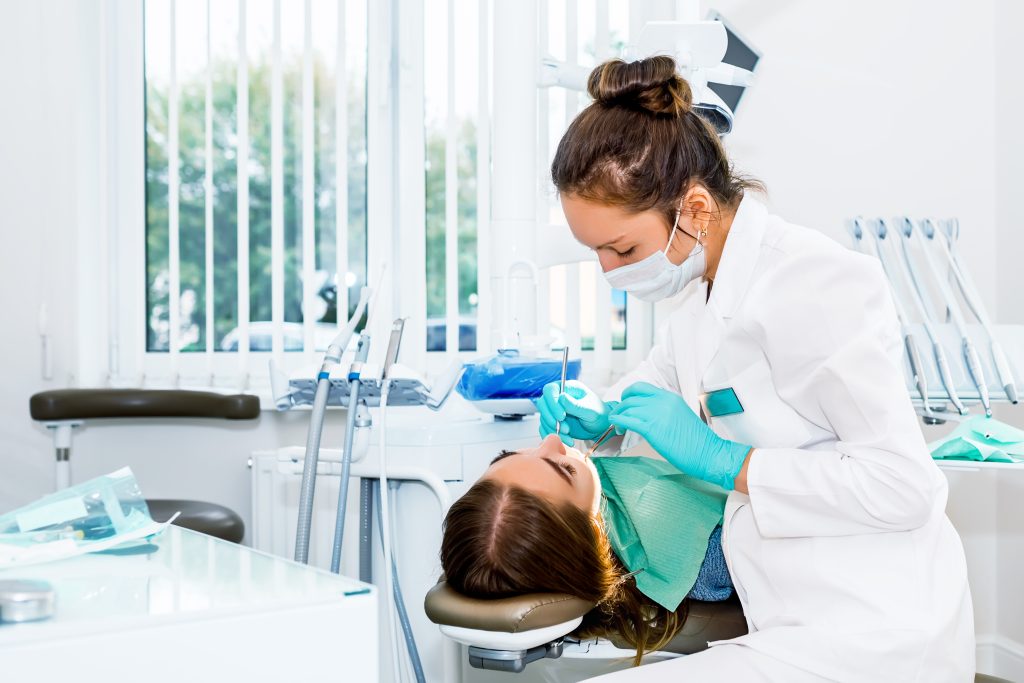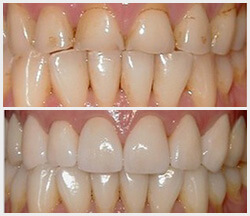Get the Smile You Deserve With Pocket Reduction Surgery
If you’re struggling with advanced periodontal disease, a cutting-edge treatment called pocket reduction surgery may help. This procedure removes harmful bacteria and damaged tissue from the pockets around your teeth, reducing their depth and preventing further harm.
Schedule an appointment with our dentists in Staten Island today and get your gum disease under control.
What Is Pocket Reduction Surgery?
Pocket reduction surgery, also called flap surgery, is a dental procedure that aims to treat gum disease by removing bacteria that have accumulated in the pockets around the teeth. These pockets form when the plaque and tartar are trapped under the gums or the gums are pulled away from the teeth. Over time, bacteria within the pockets can damage the surrounding bone and lead to tooth loss if left untreated.
During pocket reduction surgery, a skilled periodontist will make incisions in the gum tissue to create a flap. Your periodontist will then clean the area of bacteria and tartar buildup before suturing the flap back into place.
How Pocket Reduction Works
The first step in pocket reduction surgery is thoroughly examining and cleaning teeth and gums. Your periodontist will use dental X-rays and other diagnostic tools to assess the extent of the damage caused by gum disease. If the damage is significant, pocket reduction surgery may be recommended.
Before the procedure, your dental professional will administer a local anesthetic to numb the area around the teeth and gums. This ensures that you’re comfortable during the surgery. Once the anesthetic has taken effect, they’ll make incisions in the gum tissue to create a flap. This flap will be lifted to expose the roots of the teeth and the surrounding bone.
They’ll use special instruments to remove the bacteria and tartar buildup from the area. The roots of the teeth will also be cleaned to remove any bacterial buildup that may have accumulated. Once the site has been thoroughly cleaned, your periodontist will suture the flap back into place.
Benefits of Flap Surgery
There are many benefits to pocket reduction surgery, including:
- Reduces Pocket Depth: By reducing the depth of the pockets between the teeth and gums, pocket reduction surgery helps remove the source of the infection.
- Prevents Further Damage: Gum disease can cause damage to the teeth and supporting structures. Pocket reduction surgery can help prevent further damage and preserve the teeth.
- Improves Oral Health: By removing the source of the infection, pocket reduction surgery can improve overall oral health.
- Enhances Appearance: Pocket reduction surgery can improve the appearance of the gums and teeth by reducing swelling and inflammation.
Frequently Asked Questions:
Is pocket reduction surgery painful?
A local anesthetic is used during pocket reduction surgery to numb the area, helping minimize discomfort. Patients may feel some pressure or vibration during the procedure, but shouldn’t experience any pain. After the procedure, some patients may experience mild discomfort, but this can usually be managed with over-the-counter pain medication.
How long does it take to recover from pocket reduction surgery?
The recovery time for pocket reduction surgery varies from patient to patient, depending on the severity of the gum disease and the extent of the surgery. Most patients can return to normal activities within a few days of the procedure, but it may take up to a week or two to fully recover.
During the recovery period, avoid hard or crunchy foods and follow your dentist’s post-operative instructions carefully. This may include using a special mouthwash or following a specific oral hygiene routine.
How can I prevent gum disease from recurring after surgery?
Maintaining good oral hygiene habits is key to preventing gum disease from recurring after pocket reduction surgery. This includes brushing twice a day, flossing at least once a day, and using mouthwash regularly. Your dentist may also recommend additional treatments, such as antibiotics or antimicrobial mouthwash, to help control bacteria and prevent reinfection. Regular dental checkups and cleanings are also important for monitoring the health of your gums and preventing future gum disease.
Is pocket reduction surgery covered by insurance?
Many dental insurance plans cover pocket reduction surgery if it’s deemed medically necessary. However, check with your insurance provider to understand your coverage and any out-of-pocket expenses.
Your dentist’s office can work with your insurance provider to determine your coverage and help you navigate the insurance process. If your insurance doesn’t cover the procedure or you don’t have insurance, your dentist may offer payment plans or financing options to help make the procedure more affordable.
Revitalize Your Smile and Discover the Benefits of Pocket Reduction Surgery
If you’re tired of living with the discomfort and embarrassment of pocketing around your teeth, it’s time to take action. Pocket reduction surgery can help you regain your confidence and improve your oral health. Don’t let the fear of surgery hold you back from experiencing the benefits of this procedure.
Don’t wait any longer to start living your best life — schedule your appointment today and let us help you achieve the smile you’ve always wanted.



Insurance
We accept many insurances. Please contact one of our Insurance Coordinators to discuss your dental coverage plan.
(718) 948 5111
appointments@sidental.com
Open 7 days a week
Reviews
The dentists are absolutely excellent…
“I have been going here for years. The dentists are absolutely excellent and they always have an appointment available that fits into a busy schedule. I also completed invisilgn and my teeth are perfectly straight now. They also practice preventive medicine and just went in for my 6 month cleaning. Every time feel like I have a new set of choppers and best yet the check up noted no cavities!.”
— J.R
Pleasant visit
“As usual, it was a pleasant visit thanks to Dr. Nasso and her great staff..”
— C.M.
Always treated with courtesy and respect.
“Always treated with courtesy and respect. All of my questions were answered regarding upcoming treatments..”
— J.C.
Smile Profile




Put your best face forward.
Create a positive change to your teeth and your smile.
